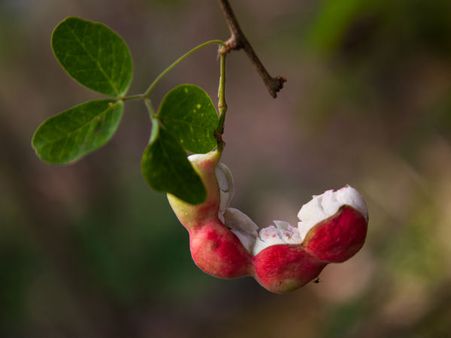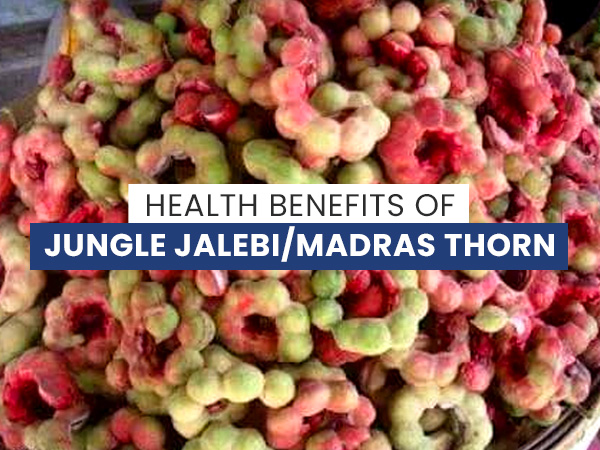Just In
- 38 min ago

- 1 hr ago

- 1 hr ago

- 5 hrs ago

Don't Miss
- Finance
 Rs 14/Share Dividend: Stockbroking Co To Consider Bonus Share, Shares Up 126% In 180-Days
Rs 14/Share Dividend: Stockbroking Co To Consider Bonus Share, Shares Up 126% In 180-Days - Movies
 Celebrating 700 Sessions: Boman Irani's 'Spiral Bound' Writing Community Flourishes!
Celebrating 700 Sessions: Boman Irani's 'Spiral Bound' Writing Community Flourishes! - Sports
 Rohit Sharma reveals he isn't staying with Mumbai Indians squad during home matches: 'Just going an hour before'
Rohit Sharma reveals he isn't staying with Mumbai Indians squad during home matches: 'Just going an hour before' - Technology
 Motorola Edge 50 Pro Goes on Sale in India at 03:00 pm Today via Flipkart: Check Price, Specs, Offers
Motorola Edge 50 Pro Goes on Sale in India at 03:00 pm Today via Flipkart: Check Price, Specs, Offers - News
 Karnataka Weather Alert: Light Rains Likely In Bengaluru In Next 24 Hours, Check Latest Forecast
Karnataka Weather Alert: Light Rains Likely In Bengaluru In Next 24 Hours, Check Latest Forecast - Travel
 Journey From Delhi To Ooty: Top Transport Options And Attractions
Journey From Delhi To Ooty: Top Transport Options And Attractions - Education
 IIIT-Bangalore Introduces PG Diploma In Digital Product Design And Management
IIIT-Bangalore Introduces PG Diploma In Digital Product Design And Management - Automobiles
 Jawa Yezdi Expands Mega Service Camps To 32 New Cities, Focusing On Tier-II And Tier-III Regions
Jawa Yezdi Expands Mega Service Camps To 32 New Cities, Focusing On Tier-II And Tier-III Regions
15 Amazing Health Benefits Of Jungle Jalebi/Madras Thorn
Jungle jalebi is known by many names such as Manila tamarind, Vilayati imli, KodukkaPuli, Ganga tamarind, Madras thorn, Devil's necklace and Monkeypod. Scientifically, it is termed Pithecellobium dulce and is a species of flowering plant that belongs to the family Leguminosae (legumes, beans and peas).
Jungle jalebi is not commercially sold in India. It is a tamarind-like fruit which is mainly picked from the side of the road or jungle and sold, the reason why it is known as Jungle Jalebi.
All the parts of the plant such as pulp, leaves, flowers, seeds and bark are used to treat various ailments and diseases. The leaves of Vilayati imli are pinnate while the flowers are greenish-white. The flowers develop into a pod, which is circular, similar to the shape of a jalebi. The seed pods are green when raw and turn pink when ripe and open up for the white pulp, which is thick, sweet and tart.
This article contains details about the amazing health benefits of jungle jalebi. Read on to know.

Nutritional Profile Of Jungle Jalebi
According to the data provided in a study, jungle jalebi contains vitamin C, vitamin B1, B2, B3, vitamin K, iron, calcium, phosphorus, protein, dietary fibre, sodium and vitamin A.
Jungle jalebi is rich in potent phytochemicals such as tannin (phenols) and quercetin (flavonoid). Other ethanolic extracts of the fruits include heptacosanoic acid, tetracosanol, hexadecanoic acid and stigmasterol.
The seeds are rich in saponins, glycosides, polysaccharides, quercetin, kaempferol, ascorbic acid and formic acid. It contains around 17 unsaturated fatty acids while 9 saturated fatty acids. The content of proteins in them is the highest of all other parts of the plant. The major amino acids include arginine, glutamic acid and leucine.
The leaves have been reported to contain kaempferol, quercitin,afezilin and dulcitol while the barks are packed with 37 per cent tannins. [1]
All these nutrients possess strong antioxidative, anti-inflammatory, antidiabetic, analgesic and other properties.
Health Benefits Of Jungle Jalebi

1. Helps in weight loss
The high concentration of dietary fibre, vitamin C and saponins in Madras thorn help in the great weight management. A study says that saponins can reduce the weight to around 20-30 per cent in both normal and high-fat diet. The fruit excessively helps burn those extra kilos and helps with weight loss. [2]
2. Have anti-cancer agents
The leaves of jungle jalebi have potent cytotoxic or cancer-preventive effects. In a study, the anti-cancer agents in the leaves helped reduce only the human breast cancer cells and not the normal cells, through the process of selective apoptosis. [3] Also, the fruit is rich in thiamine (vitamin B1) and its consumption may help prevent tumour growth.

3. Treats intestinal problems
The leaves of Ganga tamarind are traditionally used to treat intestinal-related problems. They have strong antimicrobial, antioxidative and anti-inflammatory properties against pathogens such as E.coli and Shigella which are known to harm the intestines. Also, oleanolic acid in the seeds helps maintain the intestinal functions.
4. Maintains the skin health, treats eczema
Eczema is a condition characterised by inflamed, cracked, itchy and dry skin. The presence of vitamin C, tannins and saponins in Vilayati imli is responsible for its strong antioxidative, anti-inflammatory and antibacterial properties. These compound helps treat eczema and related symptoms as well as boost immunity.

5. Manages diabetes symptoms
The bark of jungle jalebi is mostly used in the management of diabetes. The phytochemicals in barks such as alkaloids, tannins, flavonoids, proteins and saponins, at a dose of 200-400 mg/kg body weight can show diabetes-preventive activity by lowering the cholesterol and controlling glucose levels. [4]
6. Great for the liver
The liver is a primary target for toxicity as it helps metabolise all the toxic chemicals and flush them out of the body. Sometimes, on exposure to excessive chemical substances, hepatic injuries may occur that can cause abnormality in liver functions, apoptosis or degeneration. Jungle jalebi possesses hepaprotective activities and may help the liver protect from toxin-induced hepatic damage. [5]

7. Promotes bones and muscles health
The calcium in Manila tamarind pulp helps in boosting the health of bones while the leaves contain skeletal muscle relaxant activity that may help in easing pain and stiffness of the muscles.
8. May cure tuberculosis
Bark and leaves of P.dulce are mainly studies for anti-tuberculosis and anti-microbial properties. Though the pulp is also enriched with vital nutrients, the prior two contains more phytochemicals than the latter. The bark and leaves of jungle jalebi inhibit the growth of mycobacterium tuberculosis strains and help in early treatment.

9. Boosts immunity
The chemical constituents in P. dulce include phytochemicals such as flavonoids, tannins and vitamin C which are potent antioxidants. They help create a powerful defence mechanism against various infections types and contribute to boosting the immunity of a person.
10. May prevent lung infections
A study talks about the antifungal and antioxidant of Madras thorn. It says that the leaves extract of the plant have alkaloids, coumarin, anthocyanins, triterpenoids, flavonoids and tannins that possess strong antifungal activities against A. fumigates and Aspergillus niger, a fungal type known to cause chronic pulmonary infections and allergies. [6]

11. Prevents ulcers
Vilayati imli has anti-ulcer properties similar to omeprazole, an effective drug that decreases the amount of acid in the stomach. The high number of antioxidants in the fruit helps scavenge the free radicals and inhibit the production of gastric acid secretion, thus preventing the aggravation of ulcers. Also, quercetin and kaempferol help with maintaining good stomach health.
12. Cures fever
The leaves, seeds and fruits of jungle jalebi have potential mosquito-control and bacterial-fighting properties. They help control the growth of larvae of mosquito vectors such as Aedes and Culex which are the main cause of mosquito-related fevers. The antioxidants in P. dulce also helps with boosting the immunity to prevent further episodes of fever.

13. Relieves mental health problems
KodukkaPuli has great central nervous system-relaxing and muscle-relaxing activities. The prior increases the concentration of GABA (the amino acid that acts as neurotransmitters) in the brain while the latter relaxes the skeletal muscles by its relaxing activity. This contributes to lower anxiety and depression and improves the well-being of a person.
14. Benefits the heart
Madras thorn helps lower the total serum cholesterol and LDL (bad) levels in the body while increasing the levels of HDL (good) cholesterol due to its anti-hyperlipidemic activity. Also, the antioxidants help protect the heart from oxidative stress injuries. [7]

15. Treats diarrhoea
The antidiarrheal activity of jungle jalebi is more than Loperamide, a standard antidiarrheal drug. It may help treat diarrhoea by relaxing the muscles of the stomach, providing energy and inhibiting the growth of bacteria. [1]

Side Effects Of Jungle Jalebi
- The bark of Madras thorn contains some irritating substance which can cause eye infections, skin irritation and allergies.
- The trunk of the plant is spiny which is why, it needs to be handled cautiously.
- Pregnant and breastfeeding should consult a medical expert before consumption.
- It should only be eaten or applied topically in the moderate amount due to the intense tart flavour.
- A high amount of fruit can interfere with digestion.

To Conclude
Jungle jalebi or Madras thorn comes under the list of unique fruits found in India due to its amazing health benefits and fewer side effects. As it has a majority of vital constituents, it should be eaten in moderation to get most of the health benefits and avoid any complications.
Common FAQs
1. What are the benefits of Camachile?
Camachile has amazing health benefits. From helping in weight loss to preventing ulcers, Madras thorn helps with improving digestive functions, boosting immunity, maintaining heart functions and many others.
2. What is Camachile in English?
In English, Camachile is known as Madras thorn, Monkeypod or Manila Tamarind.
3. How do you eat Camachile?
Camachile is eaten when ripe. You will notice the ripeness when the fruit turns red and the seed pod opens up for white pulp. Remove the seeds and eat the pulp.


 Click it and Unblock the Notifications
Click it and Unblock the Notifications





